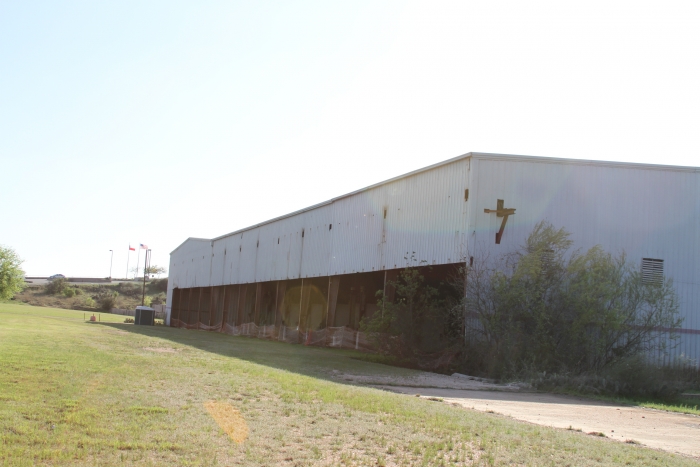Granite Shoals making million dollar 'lemonade'

The long-abandoned stone processing building in Granite Shoals Quarry Park is to be repurposed as a multi-purpose sports complex, thanks to a new Texas Parks & Wildlife grant. Find more views of the project on The Highlander page of Facebook.
By Glynis Crawford Smith
The Highlander
After years of planning, it appears the City of Granite Shoals has its chance to complete the conversion of former granite mine buildings to an indoor sports complex and community meeting space in the heart of Quarry Park.
The Texas Parks & Wildlife Department (TPWD) board on Thursday, May 23, awarded the city a $500,000 grant for a multi-purpose sports facility. Combined with the value of the land and buildings, about $450,000 and a grant administration cost the total would be $1 million.
“I am so excited for the children here in Granite Shoals,” said City Manager Ken Nickel. “It means a million dollar complex for $50,000.”
Competition was stiff. The TPWD received 65 eligible applications totaling $25,283,389 for available project matching fund assistance that amounted only to $15,868,493. The Granite Shoals project was ranked first among 37 projects recommended for funding. Lago Vista, also applying for $500,000 for a park and open space project, was ranked fifth.
Council Member Shirley King was on hand at the board meeting with Nickel and Gandolf Burrus of Grant Development Services, which developed the grant application.
“We actually began the process for this project when we started updating our Master Park Plan in 2010,” said King.
Parks have been one of King's primary focuses in a career of service to the city. She was on the City Charter Committee in 2000 and saw the value of the city's 19 small parks. When she was first elected to the council in 2001 she was at the same time chairwoman of the Parks Committee.
“I don't know that there is another project like this in Texas, where a city has taken an abandoned factory and turned that lemon into lemonade,” said Burrus. “If the city did not use the buildings for recreation they would have been eyesores and torn down at city expense.”
Now, under one roof, the hulking metal buildings of the abandoned mine facility will house two each of youth soccer fields, volleyball courts, basketball courts and baseball batting cages as well as a pickle ball court and a shuffle board court.
“That will all be in the shade and useful all through the hot summer,” said Burrus.
Smaller mine buildings already have been converted for indoor recreation with help from TPWD and the Roddick Youth Tennis Foundation. One houses two adult tennis courts and the other two youth or senior QuickStart Courts to be part of the Roddick International Tennis Center but eventually remaining in city ownership. The Leo Manzano Hike, Bike & Run Trail. with native plant and butterfly garden features, loops around them, another project that won TPWD backing.
The city has two years from the time of receiving the grant contract to complete the project and Burrus said a TPWD site visit is expected by mid-May.
The Austin grant writer has been in on Quarry Park grant development from the beginning, working with successive parks committees, council members and at least three mayors.
“This an example of what can happen when strong leadership makes up its mind to do something,” he said.
The federal Land and Water Conservation Fund (LWCF) State and Local Assistance Program, the Texas Large County and Municipality Recreation and Parks Account (Urban Parks Account), and the Texas Recreation and Parks Account (TRPA) provide matching grants to local governments for the acquisition and development of public parkland and recreation facilities. The Urban Outdoor, Non-Urban Outdoor, Small Community, Urban Indoor, and Non-Urban Indoor Grants are made available to Texas local governments based on population for the acquisition and/or development of public parkland. Funds available included $1,397,935 from the LWCF; $5,761,477 from the Urban Parks Account; and $8,709,081 from the TRPA.

